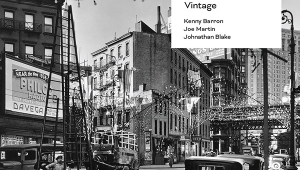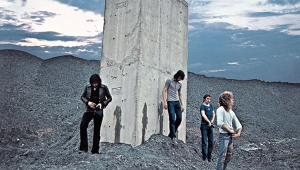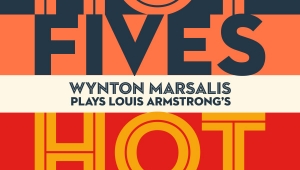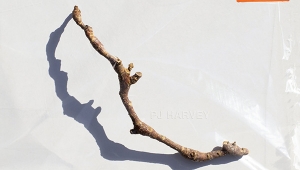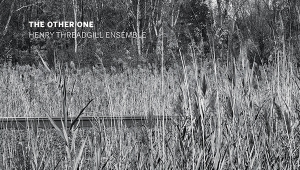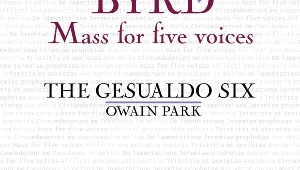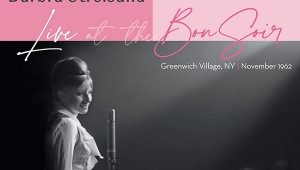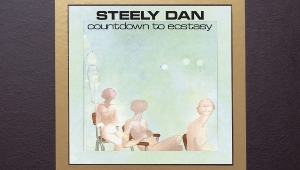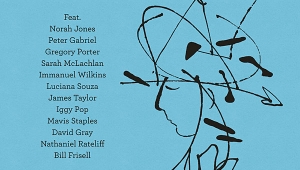| Columns Retired Columns & Blogs |
Recordings of December 1986: Two Out-of-Character Recordings
REFLECTIONS
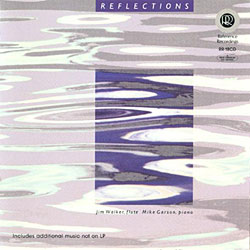 Jim Walker, flute, Mike Garson, piano
Jim Walker, flute, Mike Garson, piano
Reference Recordings CD RR-18CD.
 Jim Walker, flute, Mike Garson, piano
Jim Walker, flute, Mike Garson, pianoReference Recordings CD RR-18CD.
DEBUSSY: Quartet in g
RAVEL: Quartet in F
The Cleveland Quartet
Telarc CD-80111.
What do you listen to when you've heard Reference Recordings' Symphonie Fantastique, Telarc's 1812 Overture, and Sheffield's Firebird, the last of your audiophile guests have gone home, and tomorrow's a workday but you're too hyped up to go to bed?
These.
Both are from record companies whose reputations were built on sonic blockbusters, but the subjects of this review are about as true to expectation as Mr. T flouncing about with a limp wrist.
Reflections is a program of short works for flute and piano. It's quiet, restful, and, in an age when it seems that nothing is worth listening to unless it's high-powered or "significant," this laidback program is a delightful change of pace.
Forget that Dr. Keith Johnson did the taping, and that the sound is lovely and the performances hypnotic. After a few minutes, you don't think about any of those things. You begin to loosen up and slide down into the sofa cushions, and, from then on, just wallow in the simplicity and melting beauty of the music. All but one are duets—easy-listening, soft-rock, gentle jazz, they're really almost impossible to classify. The one solo is Debussy's Syrinx, which is done better here than I have ever heard it done before. None of the others are familiar themes—all but Syrinx were composed by Mike Garson (Mike Who?)—but all are instantly accessible and sheer, unalloyed pleasure to listen to. This isn't the kind of music that could ever justify a state-of-the-art audio system, but it's what music itself is all about. It will soothe the savage breast like no other recorded program I've heard for many years.
Get this record—either the CD or the analog release, it doesn't matter—for those moments when all you want is some P&Q, and perhaps a taste of what the world was like before time became the master and man its slave. This is a record you'll never regret having bought.
The Debussy and Ravel Quartets are invariably coupled on the same disc (the Delos CD of the Ravel being the only exception that comes to mind), because they are the only quartets written by the two leading composers of the French Impressionist school. Each represented a landmark of sorts in its composer's musical career, but they are otherwise as different in mood as candles and Coleman lamps.
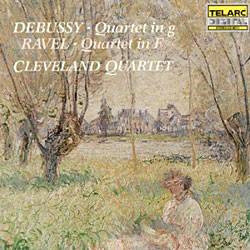 The Debussy is a rather brooding, introspective work, alternating outbursts of brilliant color with contrasting passages of exquisite gentleness. The Ravel is more forthright, upbeat, and cohesive. Both are sublimely lovely works, and the performances here are as satisfying as any I have heard.
The Debussy is a rather brooding, introspective work, alternating outbursts of brilliant color with contrasting passages of exquisite gentleness. The Ravel is more forthright, upbeat, and cohesive. Both are sublimely lovely works, and the performances here are as satisfying as any I have heard.
A string quartet is very difficult to record, because the close miking appropriate to chamber music—literally, music to be played in a room rather than a large concert recital hall—mercilessly exposes any raw edges in the playing as well as in the sound of the instruments and the microphones. The playing here is impassioned and technically impeccable, the instruments all Stradivariuses (from Nicolai Paganini's own collection), and the recording engineers were Joanna Nickrenz and Marc Aubort. The microphones? Allow me to digress . . .
About 10 years ago, a friend of mine brought over a 15ips tape he had made of solo violin, using a pair of (used) microphones he was thinking of buying. My first reaction to the sound was that the mikes were extremely close to the instrument. You could hear every movement of the player's fingers on the strings, and could even catch the tiny click each time a string was pressed sharply against the finger board. But what was truly amazing about the sound of that tape was that there was no stridency. Usually, very close miking gives violin sound a teeth-setting steeliness, but in this case it just sounded like a very close violin—excessively detailed and gutty, but otherwise the sound of a real fiddle. The microphones I was listening to were Schoeps 221Bs—tubed condenser microphones, now long-since dropped from the Schoeps line (footnote 1), and the same mikes used for this recording.
This is the best-sounding recording of a string quartet I have heard, and very possibly the best ever made. What distinguishes it from all others is its rendering of the body sounds of the instruments: the warmth and richness of the wooden parts of the instruments which contribute most of the differences we hear between the live sound of a generic violin, viola, or cello, and that of pedigreed varieties of instrument such as were used for this recording. The cello, in particular, is simply gorgeous on this recording; it almost glows! (The closest competition to this recording in terms of sound is Sheffield's Italian Pleasures, with guitarist Michael Newman, which has inadequate separation and doesn't capture as much of the instrumental body sounds of this Telarc. That still does not prevent it from being one of my favorite recordings.)
A lot of people who like classical music profess to dislike recordings of "chamber music" because they "sound so thin and shrill." I cannot disagree with that. But this one is different. Not only does it not sound thin, it gives equal weight to the instruments (instead of favoring the fiddles over the others, as is usually the case), places them in their proper locations on the soundstage, and surrounds them with just enough ambience to provide exactly the right feeling of a live but small performing space. (It was, in fact, recorded in a large space—a church in upstate New York—but the reverb was held down by covering the pews with blankets borrowed from the local Red Cross chapter. Real small rooms are impossible to record in, regardless of how well suited they may be for chamber recitals.)
My advice, regardless of how you feel about chamber music recordings in general, is: Try this one when you have a need to unwind rather than be stimulated.—J. Gordon Holt
Footnote 1: Professional recordists reading this might be interested to learn that the Schoeps importer, Posthorn Recordings (of New York City), has recently taken delivery of what will probably be the last batch of 221Bs ever to be available, unless Herr Schoeps can be persuaded to put them back into production. (Can God be persuaded to put the stegosaur back on earth?)
- Log in or register to post comments


